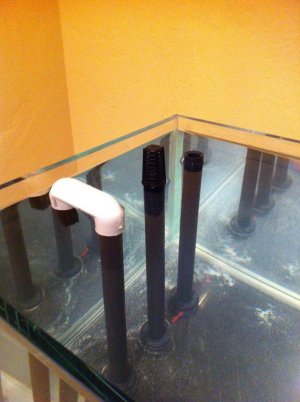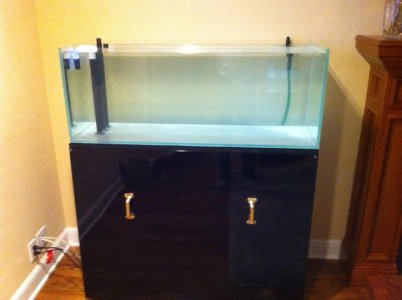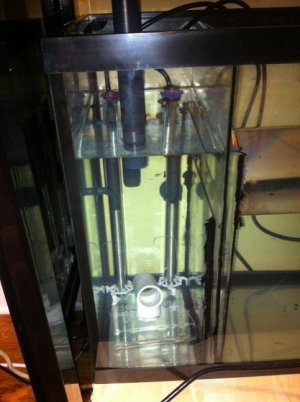Welcome to DIY on RC. Please do not take this the wrong way, it is my desire that you succeed in making this system work as intended.
The system, when built as it was designed, works as it is supposed to. When you make major modifications to the design, the results usually will not be what you expect.
The siphon is too close to the top of the tank. The "open channel" will not function as per the design, and the dry emergency is too low in relation to the siphon.
The sum total of the above, is you are not getting sufficient head pressure (water level) above the weir in the elbows, (bottom inside of the elbow) to start the main siphon. The emergency will take most of the flow, (as well as the open channel) before the siphon starts, preventing the siphon from starting. Were the inlet to the dry emergency an upturned elbow, per design, it would be above the top of the tank, and the tank would flood the floor before the siphon started. Finally, there is no "trip" for the open channel, and no possibility that it would become a siphon as intended if both the main siphon and dry emergency became plugged. When the system is adjusted and running properly, the water level will be around the top of the siphon elbow.
Perhaps just as important, is you have no overflow, so even if this system did work properly, you would get no surface skimming, other than the small amount that would go down the "open channel".
If you study the first page of the original thread, or the article on bean's website, you will see what needs to be done. It is not that it has to look identical, it just has to work the same, using the same logic. Sorry, just the way it is.

To "fix" it, you will have to cut the siphon line down, as well as the open channel, and setup the open channel with the elbows, air line etc. The water level in the tank, will probably end up at least 2" or so below the top of the tank. At that point the dry emergency could be shortened a bit, but not a great deal.



